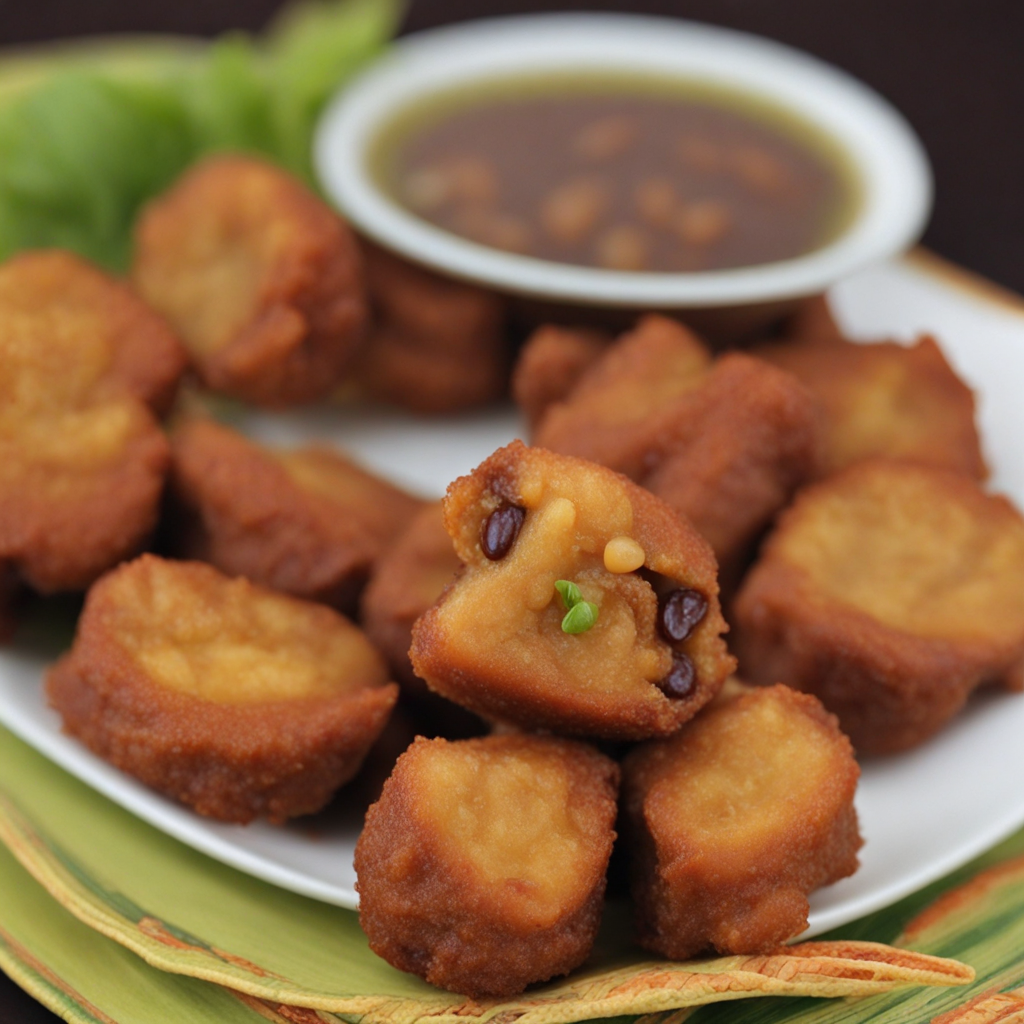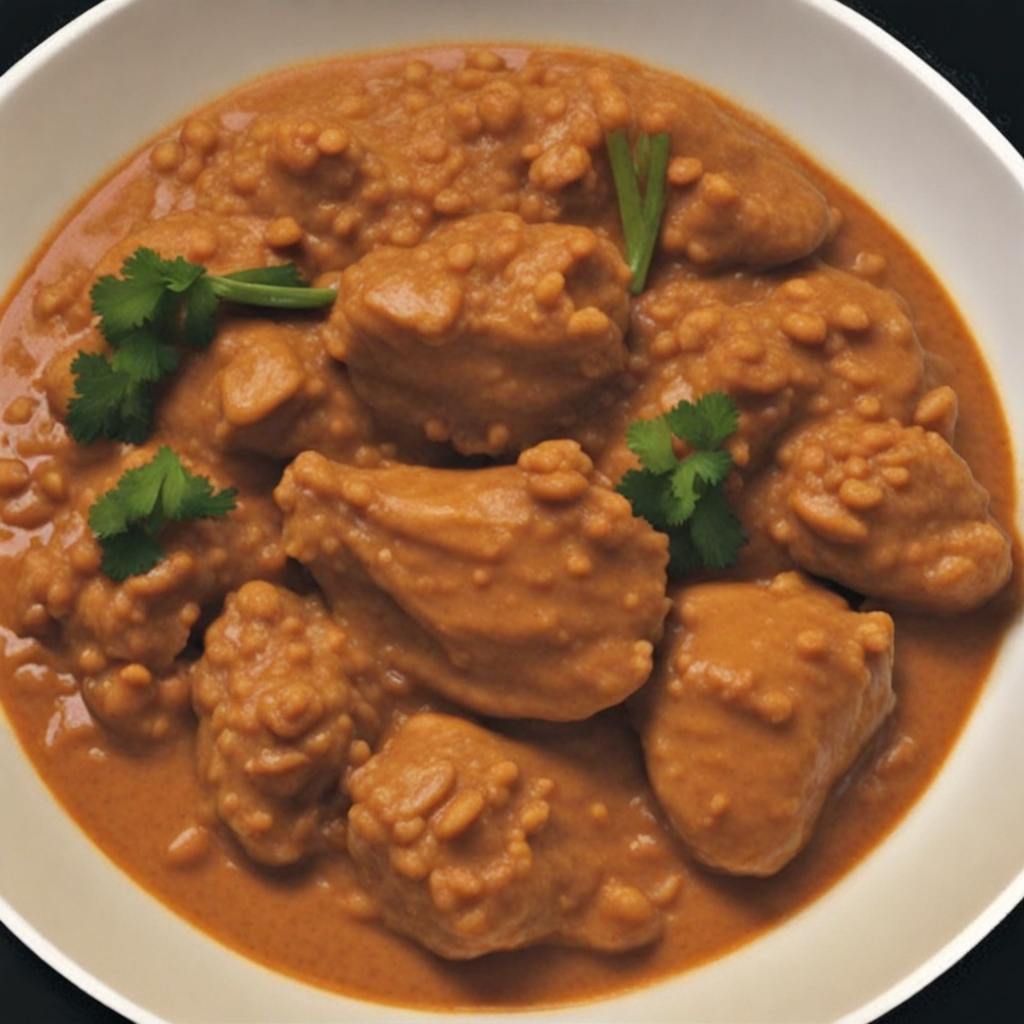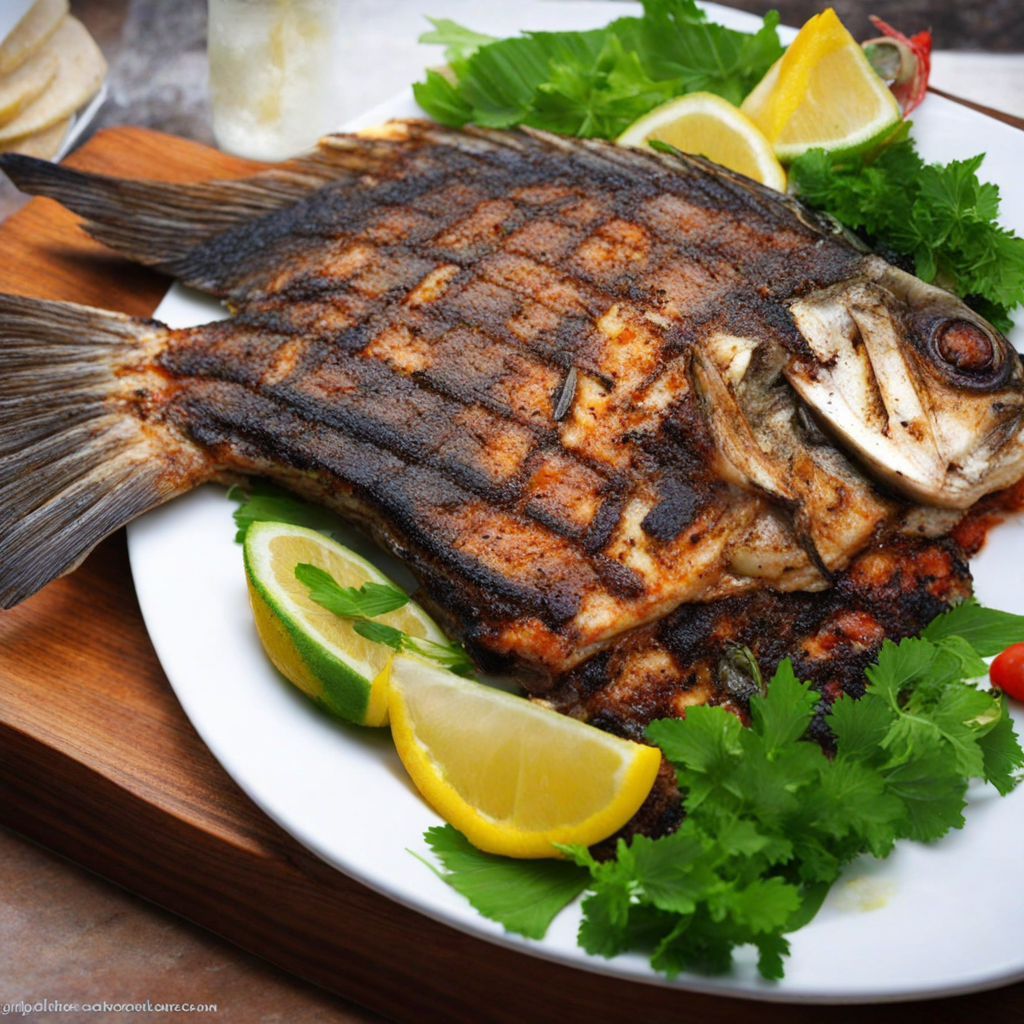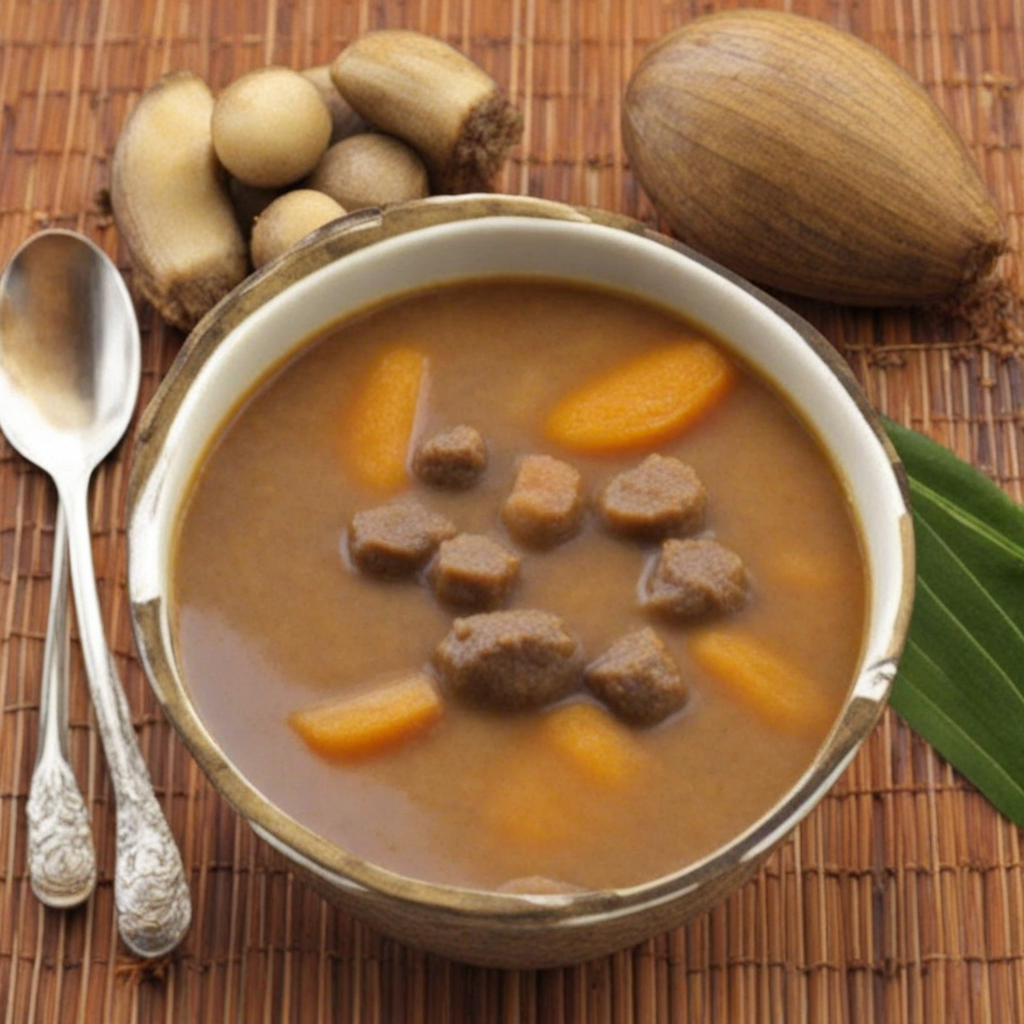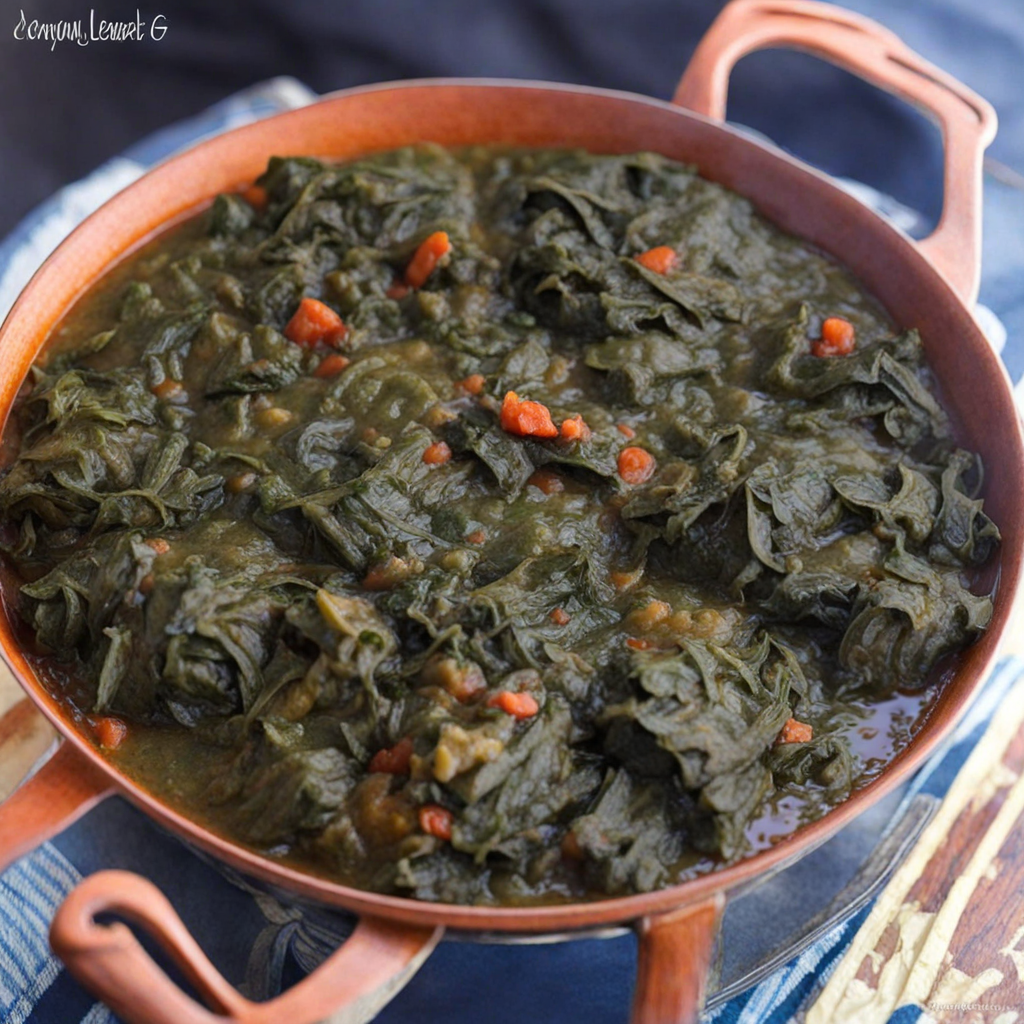Akara
Akara is a traditional dish from Equatorial Guinea that showcases the rich culinary heritage of the region. These delicious fritters are primarily made from black-eyed peas, which are soaked, peeled, and blended into a smooth paste. The mixture is often seasoned with spices such as salt, pepper, and sometimes garlic or onions, giving it a unique flavor profile that is both savory and slightly earthy. The simplicity of the ingredients allows the natural flavors to shine through, making Akara a delightful treat for the palate. Once the paste is prepared, small portions are dropped into hot oil and deep-fried until they achieve a beautiful golden-brown color. The result is a crispy exterior that gives way to a soft, fluffy interior. This contrast in texture is one of the defining characteristics of Akara, making each bite a pleasurable experience. Often enjoyed as a snack or street food, they can also be served as part of a larger meal, paired with fresh vegetables or spicy sauces that enhance their flavor even further. What makes Akara particularly special is not only its taste but also its cultural significance. It is a popular food item during celebrations and gatherings, reflecting the communal spirit of sharing and enjoyment in Equatorial Guinean culture. As you take your first bite of Akara, you'll not only be indulging in a delicious treat but also participating in a culinary tradition that has been cherished for generations. Each fritter tells a story of the land and people from which it originates, inviting you to explore the vibrant flavors of Equatorial Guinea.
How It Became This Dish
Akara: The Rich History of a Delicacy from Equatorial Guinea Akara, often referred to as bean cakes or fritters, holds a special place in the culinary landscape of Equatorial Guinea, a small yet diverse country nestled along the coast of Central Africa. With a history steeped in cultural significance and communal practices, Akara is not just a dish; it is a symbol of heritage, community, and the enduring connection between the past and present. #### Origins: From the Beans of West Africa The roots of Akara can be traced back to West Africa, where black-eyed peas (or cowpeas) are a staple ingredient in many regional dishes. The technique of grinding beans into a paste to create fritters is an ancient culinary practice that likely predates the introduction of modern cooking methods. The word "Akara" itself is derived from the Yoruba language of Nigeria, where the dish is also popular. As people migrated over centuries, they brought their culinary traditions along with them, leading to the spread of Akara across different regions, including Equatorial Guinea. In Equatorial Guinea, Akara is typically made from black-eyed peas, which are soaked, peeled, and then ground into a smooth paste, often mixed with onions, spices, and sometimes peppers to enhance the flavor. The mixture is then deep-fried until golden brown, resulting in a crunchy exterior that gives way to a soft, flavorful interior. #### Cultural Significance: More Than Just Food In Equatorial Guinea, Akara is much more than a simple snack; it embodies community and tradition. It is often prepared during special occasions, family gatherings, and festive celebrations, where it serves as a symbol of hospitality and sharing. The act of making Akara can also be communal, with families and friends coming together to prepare the dish, fostering bonds and creating memories. Moreover, Akara holds cultural significance beyond its culinary appeal. It is often served during important ceremonies, including weddings and religious festivities, highlighting its role in marking significant life events. The preparation of Akara is also interwoven with local customs and traditions, with variations in recipes and techniques reflecting the diverse cultures within Equatorial Guinea. #### Development Over Time: A Culinary Evolution As Equatorial Guinea has experienced historical changes, including colonial influences and globalization, so too has the preparation and consumption of Akara evolved. During the colonial period, various European powers introduced new ingredients and cooking techniques that influenced local cuisines. In this context, Akara adapted, incorporating additional spices and flavors that enhanced its already rich taste profile. In contemporary times, Akara continues to be a beloved street food and snack throughout Equatorial Guinea. It is commonly sold by street vendors, making it accessible to a wider audience. The dish has also gained popularity beyond its traditional context, with restaurants and eateries offering modern twists on the classic recipe. Some proprietors experiment with different types of beans or introduce innovative fillings, such as cheese or vegetables, appealing to the tastes of younger generations. Moreover, globalization has introduced Akara to international palates. It has found its way into restaurants in various countries, often celebrated for its unique flavor and texture. This exposure has not only contributed to the preservation of the dish but has also encouraged a newfound appreciation for Equatorial Guinean cuisine on the global stage. #### Akara in the Modern Era: A Culinary Ambassador As the world becomes increasingly interconnected, the role of Akara as a culinary ambassador for Equatorial Guinea has never been more pertinent. Chefs and home cooks alike are embracing the challenge of showcasing traditional dishes like Akara, emphasizing the importance of cultural heritage in the culinary arts. Through food festivals, cultural events, and social media, Akara is being shared with a broader audience, allowing individuals from diverse backgrounds to experience the flavors and stories behind this iconic dish. In addition, the rise of food blogs and online cooking platforms has democratized access to recipes, allowing for the sharing of traditional cooking techniques and family recipes. This has empowered individuals to explore their culinary roots while fostering a sense of pride in their heritage. For many, preparing Akara has become a means of connecting with their ancestors and preserving cultural traditions for future generations. #### Conclusion: The Enduring Legacy of Akara In conclusion, Akara is more than just a dish; it is a vibrant representation of Equatorial Guinea's rich cultural tapestry. From its origins in West Africa to its status as a cherished snack in modern-day Equatorial Guinea, Akara encapsulates the essence of community, hospitality, and tradition. As it continues to evolve and gain recognition both locally and internationally, Akara serves as a reminder of the power of food to connect people across time and space. As the world continues to embrace diverse culinary traditions, Akara stands as a testament to the resilience of cultural heritage. It invites us to savor not only its delicious flavors but also the stories, histories, and communal ties that it represents. Whether enjoyed at a festive gathering, from a street vendor, or in a home kitchen, Akara remains a beloved delicacy that nourishes both body and soul, bridging generations and cultures through the simple act of sharing food.
You may like
Discover local flavors from Equatorial Guinea


